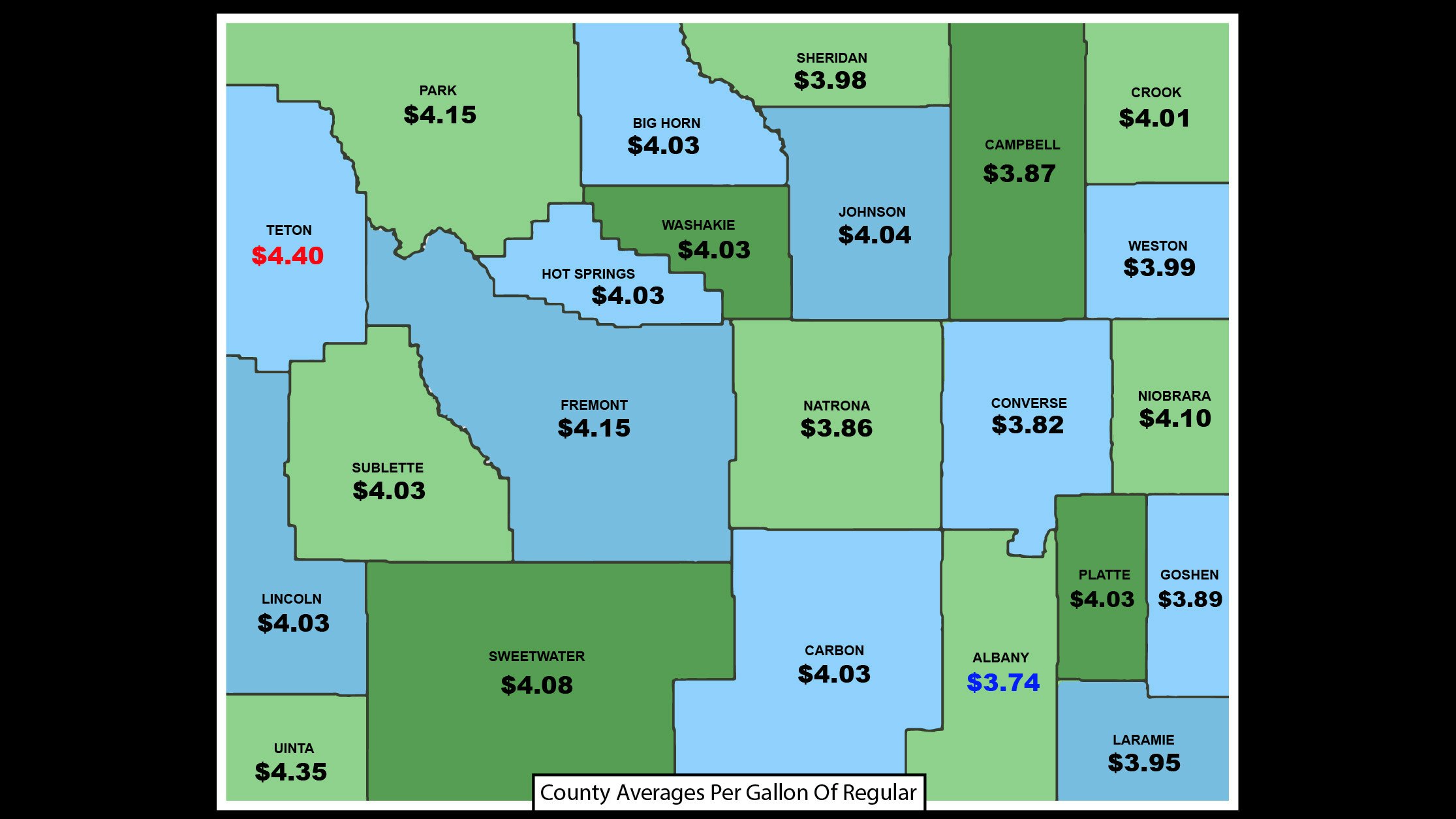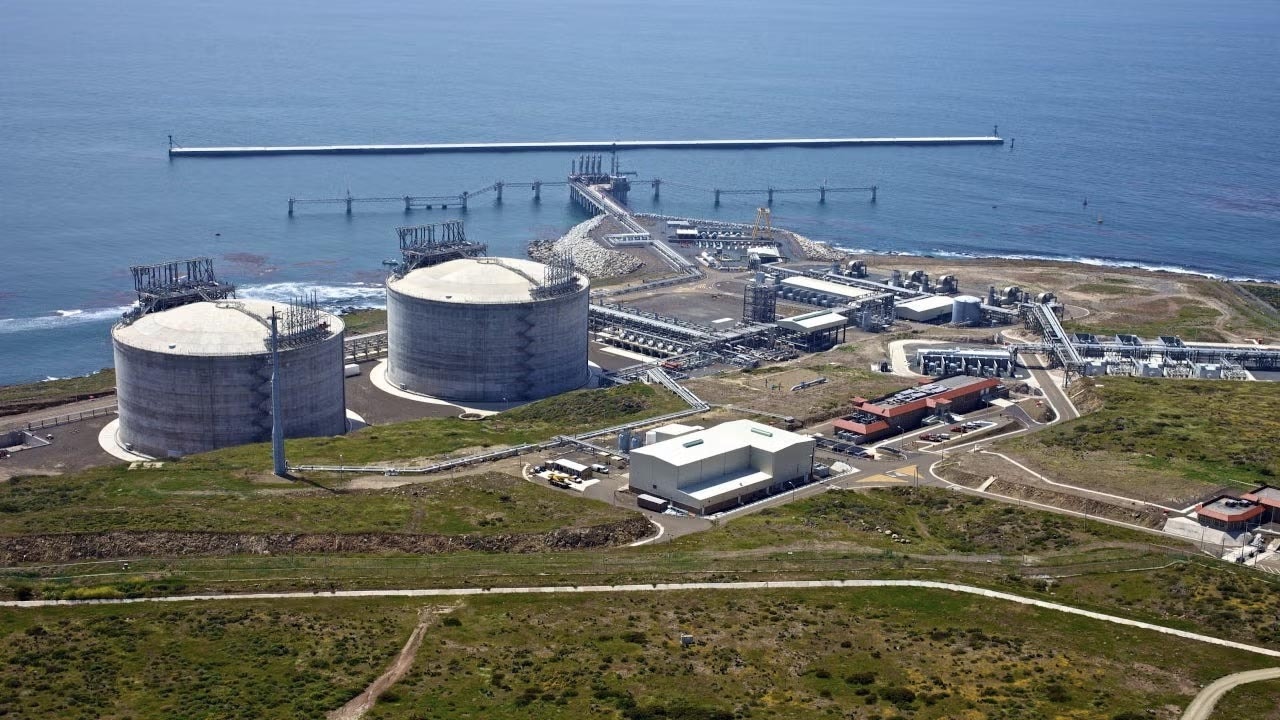Wyoming’s price of gas feell by 0.2 cents over the previous 24 hours on Friday to average $4.02 per gallon.
The website GasBuddy.com, which tracks national gas prices, reported Wyoming’s average gas price was down 0.2 cents per gallon from a week ago and is up $1.13 per gallon from one year ago.
Wyoming’s average price for gasoline remained below the national average of $4.069 for a gallon of regular.
High and Low Prices:
The highest gasoline price in Wyoming on Friday was in Jackson at with $4.78 per gallon. There was a tie for lowest price per gallon of regular between the M.G. Oil Company at 502 El Camino Road in Gillette and two stations in Douglas —the Maverik at 1108 W. Yellowstone Highway and Conoco at 1115 W. Yellowstone Highway. All three of these stations reported a price of $3.77 per gallon. These are the highest and lowest reported prices among those stationed surveyed.
Note: The county with the lowest average price is Albany, with an average of $3.74 for a gallon of regular.
Friday’s Big Movers:
Uinta County, up 31 cents per gallon, Fremont County, up 11 cents, Campbell County, down 12 cents, and Teton County, down 10 cents per gallon.
*The average price per gallon of regular in each Wyoming county:
Albany $3.74; Big Horn $4.03; Campbell $3.87; Carbon $4.03; Converse $3.82; Crook $4.01; Fremont $4.15; Goshen $3.89; Hot Springs $4.03; Johnson $4.04; Laramie $3.95; Lincoln $4.03; Natrona $3.86; Niobrara $4.10; Park $4.15; Platte $4.03; Sheridan $3.98; Sweetwater $4.08; Sublette $4.03; Teton $4.40; Uinta $4.35; Washakie $4.03; Weston: $3.99
*The lowest price per gallon, reported in major Wyoming cities:
Basin $4.15; Buffalo $3.94; Casper $3.81; Cheyenne $3.91; Cody $4.10; Douglas $3.77; Evanston $4.25; Gillette $3.77; Jackson $4.37; Kemmerer $4.28; Laramie $3.81; Lusk $3.99; New Castle $3.88; Pinedale $4.14; Rawlins $3.99; Riverton $3.98; Rock Springs $4.06; Sheridan $3.94; Sundance $3.97; Thermopolis $3.99; Wheatland $3.88; Worland $4.07.
Tim’s Observations:
Everyone is talking about electric vehicles today. Partly because of the recent spike in the price of gasoline at the pump and partly because the Biden administration is promoting them heavily. But what does that mean for Wyoming? Before doing that, let’s look at a country that has the highest number of EVs in the world, Norway.
Norway has the largest number of electric vehicles in the world, with 60% of all new car sales.
Ninety-five percent of Norway’s electricity comes from hydroelectric generation. Even with cheap electricity, the consumption in Norway has increased and the coutry is unable to keep up with demand.
As an example, in 2018, a lack of rain and low wind speed caused the price of electricity to skyrocket. As a result, Norway resorted to coal power and fossil fuel to make up the difference. And Norway has seen a net increase in CO2 emissions.
By comparison, the Cowboy State has the second-lowest number of EVs in the U.S., with 456, ahead of North Dakota, with 220. Wyoming doesn’t have the luxury of hydro power on par with Norway, but we do get a fair amount of our power generation that way. Most of our power generation is from coal, something we have in abundance.
Norway has a population density of 38 people per square mile, compared to Wyoming, at six people per square mile. Driving across Norway with the current crop of EVs would be easier than trying to get from Cheyenne to Cody. Even if we did have low electric prices here, as of yet, we just don’t have the charging infrastructure for charging, even as EV charging is getting faster, and vehicle range is increasing.
For Wyoming, one benefit of the electrification of transportation, is the recent find of rare earth mineral in our state. In a recent Cowboy State Daily article, two companies were reported to be working to develop and process rare earth deposits in Wyoming in the face of escalating demand.
We might like them, or not, but it seems EVs will be a growing segment of what’s on the Wyoming roads of tomorrow. How Wyoming copes with and integrates them might serve as a model for how the rest of the country does the same.
In my next observations segment, I’ll talk about the operating costs of EVs and compare them to conventional internal combustion engines, and give you some pros and cons for each.
*Note: Prices in this report are for reference only. They are gathered just prior to posting, and may not reflect prices that have changed since last posted.





